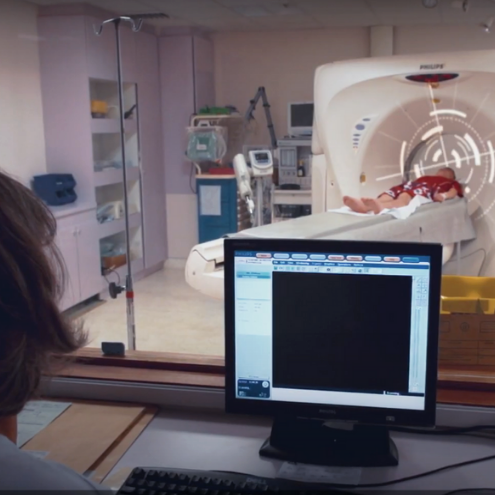
How is the medical industry concerned?

A producer of radioisotopes for nuclear medicine.
In addition to research, the Jules Horowitz reactor will also play an important role in supplying radioisotopes (especially technetium-99 via the production of molybdenum-99) for the medical industry. As the ageing fleet of test reactors is struggling to the demand for medical isotopes (unplanned shutdowns, some for lengthy periods of time), the JHR project has factored in this major societal need. The JHR is expected to produce about 25 to 50% of the European demand, thereby meeting the medical needs of thousands of patients every day.
Radioisotopes are not only used for diagnostic purposes, but also for treatment. This is known as theranostics, incorporating both diagnostic and therapeutic molecules. Certain radioisotopes such as technetium-99 are used in medical imaging, e.g. scintigraphy (gamma scans), which is a test that analyses how well an organ is functioning. Others such as lutetium-177 are used for therapeutic purposes, in vectorised internal radiotherapy, to treat certain types of cancer.
There are different methods for producing radioisotopes. Irradiation reactors such as the JHR can be used to produce large quantities of radioisotopes at a low cost.
Reminder:
During a nuclear fission reactor, the fuel (uranium-235 in this case) is bombarded with neutrons. The neutrons absorbed by these fissile nuclei provoke the release of more neutrons which in turn are absorbed by other fissile nuclei, thus initiating a chain reaction. The fission of nuclei also produces fission products that are usually unstable. This means that they have too many neutrons so they undergo successive decay to reach a more stable element.
Molybdenum-99 (99Mo) usually represents about 6% of the resulting fission products. It decays into technetium-99m (99mTc) as soon as it is produced.
Ensuring a sufficient supply can prove complex due to their short radioactive decay; molybdenum-99 has a half-life of 66 hours while technetium-99m only lasts 6 hours. It is a race against the clock between the time when the radioisotopes are produced in the reactor and when they are delivered to the hospital.